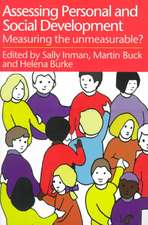Fundamentals of Causal Inference: With R: Chapman & Hall/CRC Texts in Statistical Science
Autor Babette A. Brumbacken Limba Engleză Hardback – 10 noi 2021
-An-Shun Tai & Sheng-Hsuan Lin, in Biometrics
One of the primary motivations for clinical trials and observational studies of humans is to infer cause and effect. Disentangling causation from confounding is of utmost importance. Fundamentals of Causal Inference explains and relates different methods of confounding adjustment in terms of potential outcomes and graphical models, including standardization, difference-in-differences estimation, the front-door method, instrumental variables estimation, and propensity score methods. It also covers effect-measure modification, precision variables, mediation analyses, and time-dependent confounding. Several real data examples, simulation studies, and analyses using R motivate the methods throughout. The book assumes familiarity with basic statistics and probability, regression, and R and is suitable for seniors or graduate students in statistics, biostatistics, and data science as well as PhD students in a wide variety of other disciplines, including epidemiology, pharmacy, the health sciences, education, and the social, economic, and behavioral sciences.
Beginning with a brief history and a review of essential elements of probability and statistics, a unique feature of the book is its focus on real and simulated datasets with all binary variables to reduce complex methods down to their fundamentals. Calculus is not required, but a willingness to tackle mathematical notation, difficult concepts, and intricate logical arguments is essential. While many real data examples are included, the book also features the Double What-If Study, based on simulated data with known causal mechanisms, in the belief that the methods are best understood in circumstances where they are known to either succeed or fail. Datasets, R code, and solutions to odd-numbered exercises are available on the book's website at www.routledge.com/9780367705053. Instructors can also find slides based on the book, and a full solutions manual under 'Instructor Resources'.
Din seria Chapman & Hall/CRC Texts in Statistical Science
- 5%
 Preț: 650.11 lei
Preț: 650.11 lei - 9%
 Preț: 579.76 lei
Preț: 579.76 lei - 8%
 Preț: 547.81 lei
Preț: 547.81 lei - 5%
 Preț: 838.33 lei
Preț: 838.33 lei - 9%
 Preț: 595.18 lei
Preț: 595.18 lei - 9%
 Preț: 623.03 lei
Preț: 623.03 lei - 8%
 Preț: 544.76 lei
Preț: 544.76 lei - 9%
 Preț: 641.61 lei
Preț: 641.61 lei - 8%
 Preț: 508.20 lei
Preț: 508.20 lei - 8%
 Preț: 551.99 lei
Preț: 551.99 lei - 9%
 Preț: 1115.11 lei
Preț: 1115.11 lei - 9%
 Preț: 641.93 lei
Preț: 641.93 lei -
 Preț: 341.43 lei
Preț: 341.43 lei - 8%
 Preț: 536.31 lei
Preț: 536.31 lei -
 Preț: 357.60 lei
Preț: 357.60 lei - 8%
 Preț: 444.54 lei
Preț: 444.54 lei - 9%
 Preț: 578.22 lei
Preț: 578.22 lei -
 Preț: 371.71 lei
Preț: 371.71 lei - 9%
 Preț: 806.41 lei
Preț: 806.41 lei - 9%
 Preț: 602.46 lei
Preț: 602.46 lei - 9%
 Preț: 593.61 lei
Preț: 593.61 lei - 9%
 Preț: 608.09 lei
Preț: 608.09 lei - 8%
 Preț: 496.58 lei
Preț: 496.58 lei - 9%
 Preț: 610.94 lei
Preț: 610.94 lei - 20%
 Preț: 541.42 lei
Preț: 541.42 lei -
 Preț: 355.66 lei
Preț: 355.66 lei - 8%
 Preț: 516.75 lei
Preț: 516.75 lei -
 Preț: 349.10 lei
Preț: 349.10 lei - 9%
 Preț: 568.64 lei
Preț: 568.64 lei - 8%
 Preț: 465.05 lei
Preț: 465.05 lei - 9%
 Preț: 580.81 lei
Preț: 580.81 lei - 9%
 Preț: 617.41 lei
Preț: 617.41 lei - 9%
 Preț: 595.91 lei
Preț: 595.91 lei -
 Preț: 388.08 lei
Preț: 388.08 lei -
 Preț: 356.64 lei
Preț: 356.64 lei - 8%
 Preț: 547.38 lei
Preț: 547.38 lei - 9%
 Preț: 599.19 lei
Preț: 599.19 lei -
 Preț: 316.73 lei
Preț: 316.73 lei - 9%
 Preț: 638.87 lei
Preț: 638.87 lei -
 Preț: 349.46 lei
Preț: 349.46 lei -
 Preț: 372.50 lei
Preț: 372.50 lei - 11%
 Preț: 686.52 lei
Preț: 686.52 lei - 8%
 Preț: 510.14 lei
Preț: 510.14 lei - 8%
 Preț: 511.07 lei
Preț: 511.07 lei - 8%
 Preț: 563.73 lei
Preț: 563.73 lei - 18%
 Preț: 713.39 lei
Preț: 713.39 lei - 15%
 Preț: 684.84 lei
Preț: 684.84 lei - 22%
 Preț: 371.94 lei
Preț: 371.94 lei
Preț: 439.81 lei
Preț vechi: 478.05 lei
-8% Nou
Puncte Express: 660
Preț estimativ în valută:
84.15€ • 87.87$ • 69.49£
84.15€ • 87.87$ • 69.49£
Carte disponibilă
Livrare economică 25 martie-08 aprilie
Livrare express 11-15 martie pentru 33.42 lei
Preluare comenzi: 021 569.72.76
Specificații
ISBN-13: 9780367705053
ISBN-10: 0367705052
Pagini: 248
Ilustrații: 41 Tables, black and white; 32 Line drawings, black and white; 32 Illustrations, black and white
Dimensiuni: 156 x 234 x 20 mm
Greutate: 0.53 kg
Ediția:1
Editura: CRC Press
Colecția Chapman and Hall/CRC
Seria Chapman & Hall/CRC Texts in Statistical Science
ISBN-10: 0367705052
Pagini: 248
Ilustrații: 41 Tables, black and white; 32 Line drawings, black and white; 32 Illustrations, black and white
Dimensiuni: 156 x 234 x 20 mm
Greutate: 0.53 kg
Ediția:1
Editura: CRC Press
Colecția Chapman and Hall/CRC
Seria Chapman & Hall/CRC Texts in Statistical Science
Public țintă
Postgraduate and Undergraduate AdvancedCuprins
1. Introduction. 2. Conditional Probability and Expectation. 3. Potential Outcomes and the Fundamental Problem of Causal Inference. 4. Effect-measure Modification and Causal Interaction. 5. Causal Directed Acyclic Graphs. 6. Adjusting for Confounding: Back-door method via Standardization. 7. Adjusting for Confounding: Difference-in-Differences Estimators. 8. Adjusting for Confounding: Front-door method. 9. Adjusting for Confounding: Instrumental Variables. 10. Adjusting for Confounding: Propensity-score Methods. 11. Efficiency with Precision Variables. 12. Mediation.
Notă biografică
Babette A. Brumback is Professor and Associate Chair for Education in the Department of Biostatistics at the University of Florida; she won the department’s Outstanding Teacher Award for 2020-2021. A Fellow of the American Statistical Association, she has researched and applied methods for causal inference since 1998, specializing in methods for time-dependent confounding, complex survey samples and clustered data.
Recenzii
"[This book] provides an excellent introduction to causal inference methods and their implementations using R. The book is well-written, with many technical concepts and methods explained using real examples. As the way the book is designed, it can make an excellent introductory textbook for undergraduate and graduate students in Statistics, Biostatistics, and related fields, and a useful resource for researchers seeking to use observational data to generate evidence of causality."
-Ting Ye, in Journal of the American Statistical Association, November 2023
"[...This] book not only details the fundamentals of causal inference and the mathematical theory of causation but also uses toy examples and analyses of simulated data with R software to illustrate the concepts of counterfactual models and causal mechanisms. The book also demonstrates the implementation of causal methods in R. [...]. Overall, this textbook is a perfect guide for interested researchers and students who wish to understand the rationale and methods of causal inference. Each chapter provides an R implementation of the introduced causal concepts and models and concludes with appropriate exercises. We believe that this book can evoke reader interest in causal thinking and reduce the difficulty of learning about causal inference.We thus enthusiastically recommend this book to statisticians in all fields."
-An-Shun Tai, Sheng-Hsuan Lin, in Biometrics, July 2022
"(...) This book is a superb introduction to causal inference. ... First, the writing style is clear and lucid. I found it very easy to read. I appreciated the preface in which the author describes some of the intentional choices that she has made in writing the book. There is interleaving of R code for implementing the methods, which I think is a very effective pedagogical device for new learners. It mixes the theoretical concepts with implementable techniques. ... Many of the advanced books begin immediately with the potential outcomes model or the DAG framework and then to causal effects in these frameworks. By contrast, Brumback does a very nice job of interleaving more traditional statistical concepts like conditional probability, interaction and regression with causal inference ideas. By doing this, she has dramatically lowered the barrier for students into this field, which can prove to be quite daunting to those encountering it for the first time. ... With this clear, rigorous, and readable presentation of causal inference concepts with basic principles of probabilities and statistics, Brumback’s text will greatly enhance the accessibility of causal inference to students, researchers and practitioners in a wide variety of disciplines."
-Debashis Ghosh, in International Statistical Review, March 2022
"I would definitely consider adopting this book for my class, especially for the introduction to the history of causal inference, the fundamental problem of causal inference, and graphical models. I think it compares favorably to competing books, particularly in that I think it does a nice job referencing different causal inference frameworks."
-Edward Kennedy, Carnegie Mellon University
"This textbook would be ideal for our department’s introductory course in causal methods which targets MS students in Epidemiology and Health Policy. I would even consider using this textbook in my PhD level Causal Inference course for Biostatistics students as a supplement because of its great R code and excellent data examples...The text is very clear and presents concepts in an accessible way. It is in fact much more accessible than current textbooks I’ve used. It is well organized and builds on concepts nicely throughout. Again, I think the R code is a huge plus. There is also very little reliance on any advanced math. Understanding probabilities and conditional expectations is all that is needed to fully appreciate this textbook."
-Nandita Mitra, University of Pennsylvania
"This is a timely book on a topic that’s becoming ever more popular, for both methodological and applied researchers. the book would be a good one for undergrad majors in statistics and related fields, and at the same time some graduate students and researchers etc."
-Ronghui Xu, University of California San Diego
-Ting Ye, in Journal of the American Statistical Association, November 2023
"[...This] book not only details the fundamentals of causal inference and the mathematical theory of causation but also uses toy examples and analyses of simulated data with R software to illustrate the concepts of counterfactual models and causal mechanisms. The book also demonstrates the implementation of causal methods in R. [...]. Overall, this textbook is a perfect guide for interested researchers and students who wish to understand the rationale and methods of causal inference. Each chapter provides an R implementation of the introduced causal concepts and models and concludes with appropriate exercises. We believe that this book can evoke reader interest in causal thinking and reduce the difficulty of learning about causal inference.We thus enthusiastically recommend this book to statisticians in all fields."
-An-Shun Tai, Sheng-Hsuan Lin, in Biometrics, July 2022
"(...) This book is a superb introduction to causal inference. ... First, the writing style is clear and lucid. I found it very easy to read. I appreciated the preface in which the author describes some of the intentional choices that she has made in writing the book. There is interleaving of R code for implementing the methods, which I think is a very effective pedagogical device for new learners. It mixes the theoretical concepts with implementable techniques. ... Many of the advanced books begin immediately with the potential outcomes model or the DAG framework and then to causal effects in these frameworks. By contrast, Brumback does a very nice job of interleaving more traditional statistical concepts like conditional probability, interaction and regression with causal inference ideas. By doing this, she has dramatically lowered the barrier for students into this field, which can prove to be quite daunting to those encountering it for the first time. ... With this clear, rigorous, and readable presentation of causal inference concepts with basic principles of probabilities and statistics, Brumback’s text will greatly enhance the accessibility of causal inference to students, researchers and practitioners in a wide variety of disciplines."
-Debashis Ghosh, in International Statistical Review, March 2022
"I would definitely consider adopting this book for my class, especially for the introduction to the history of causal inference, the fundamental problem of causal inference, and graphical models. I think it compares favorably to competing books, particularly in that I think it does a nice job referencing different causal inference frameworks."
-Edward Kennedy, Carnegie Mellon University
"This textbook would be ideal for our department’s introductory course in causal methods which targets MS students in Epidemiology and Health Policy. I would even consider using this textbook in my PhD level Causal Inference course for Biostatistics students as a supplement because of its great R code and excellent data examples...The text is very clear and presents concepts in an accessible way. It is in fact much more accessible than current textbooks I’ve used. It is well organized and builds on concepts nicely throughout. Again, I think the R code is a huge plus. There is also very little reliance on any advanced math. Understanding probabilities and conditional expectations is all that is needed to fully appreciate this textbook."
-Nandita Mitra, University of Pennsylvania
"This is a timely book on a topic that’s becoming ever more popular, for both methodological and applied researchers. the book would be a good one for undergrad majors in statistics and related fields, and at the same time some graduate students and researchers etc."
-Ronghui Xu, University of California San Diego
Descriere
Explains and relates different methods of confounding adjustment in terms of potential outcomes and graphical models, including standardization, difference-in-differences estimation, the front-door method, instrumental variables estimation, and propensity score methods.




















